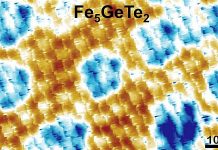
Astronomers at MIT, NASA, and other institutions have discovered a new way to measure the spin of supermassive black holes by observing the wobbly aftermath of their interactions with stars.
This innovative method relies on a phenomenon called a tidal disruption event (TDE), where a black hole’s immense gravitational forces tear apart a passing star, creating a bright and rotating disk of stellar material.
The research team, led by MIT’s Dheeraj “DJ” Pasham, found that the wobble of this newly formed accretion disk can reveal the black hole’s spin.
Their study, published in Nature, details how they tracked X-ray flashes produced by a nearby supermassive black hole following a TDE.
By monitoring these flashes over several months, the scientists determined that the wobbling accretion disk was influenced by the black hole’s spin.
Every black hole has a spin that has developed over time through cosmic interactions. For instance, a black hole that grows by consuming material will spin faster, while one that grows by merging with other black holes might spin slower.
As a black hole spins, it drags the surrounding space-time with it, a phenomenon known as Lense-Thirring precession.
During a TDE, a star can be torn apart by a black hole, generating a disk of hot, shredded material that may be tilted relative to the black hole’s spin.
As this disk interacts with the black hole, it wobbles. Scientists predicted that this wobble could be used to measure the black hole’s spin, but they needed the right observations to test this theory.
In February 2020, Pasham and his colleagues detected a bright flash from a galaxy about a billion light-years away, identified as AT2020ocn. This flash, spotted by the Zwicky Transient Facility, indicated the initial moments of a TDE.
The team used NASA’s NICER (Neutron star Interior Composition Explorer) telescope to continuously observe the event over 200 days. NICER, an X-ray telescope on the International Space Station, provided the necessary high-cadence data to track the wobbling disk.
The researchers discovered that the TDE emitted X-rays that peaked every 15 days, a pattern they interpreted as the wobbling accretion disk facing the NICER telescope.
By analyzing these wobbling patterns and incorporating the original theory of Lense-Thirring precession, the team estimated the black hole’s spin to be less than 25 percent the speed of light—a relatively slow spin for a black hole.
This study marks the first time scientists have used observations of a wobbling disk after a TDE to estimate a black hole’s spin.
Co-author Chris Nixon from the University of Leeds emphasized the significance of this discovery, noting that it opens new avenues for understanding black holes.
With upcoming telescopes like the Rubin Observatory, Pasham anticipates more opportunities to measure black hole spins. “The spin of a supermassive black hole tells you about the history of that black hole,” Pasham explains.
“By measuring the spins of hundreds of TDEs, we can gain insights into how black holes evolve over the universe’s history.”
This groundbreaking research was funded by NASA and the European Space Agency, promising a deeper understanding of black hole dynamics and their role in the cosmos.



